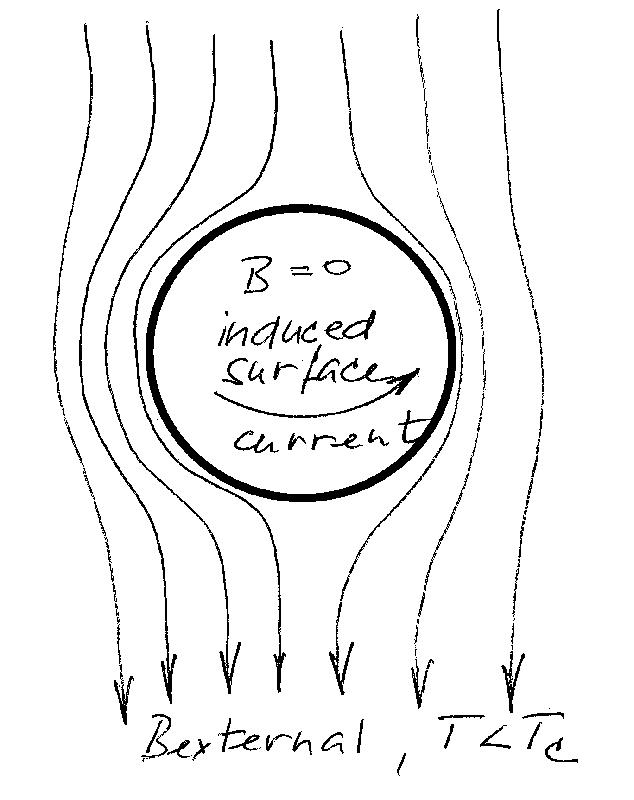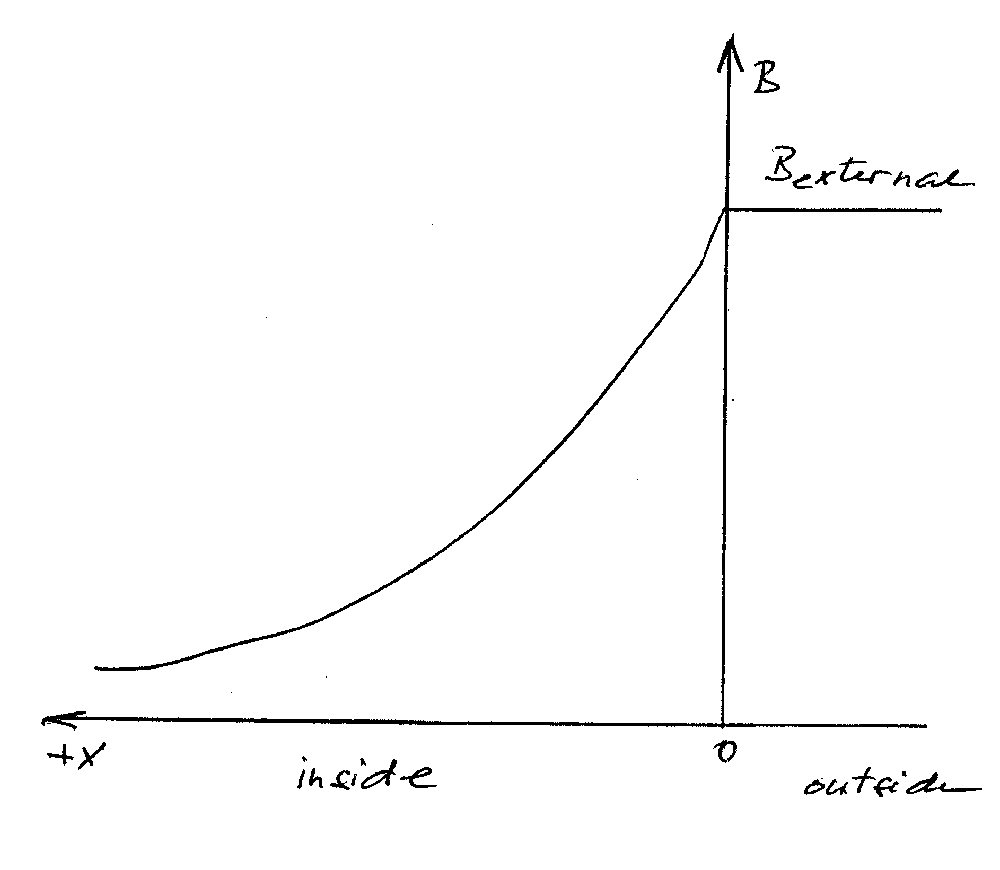Meissner Effect
Meissner effect: expulsion of magnetic field from the interior of the superconductor Thought experiment Consider a sphere made out of superconductive
material. At T>Tc the material is in normal state. When external magnetic field is turned on, the external magnetic field penetrates through the material.

On the basis of Faraday’s law,

one would expect that at T<Tc the magnetic field would remain trapped in the material after the external field has been turned off.
The trapping of magnetic field does not happen (the absence of magnetic field inside the superconductor is the Meissner effect).
This is what happens:

The magnetic field is expelled from the interior of the superconductor, inside the superconductor B=0.
Superconductor expels magnetic field from the interior by setting up electric current at the surface. The surface current creates magnetic field that exactly cancels the external magnetic field!
This electric current at the surface of the superconductor appears at T<Tc in order that B=0 inside the superconductor.

Penetration of magnetic field below the surface of superconductors
The surface current is distributed in the surface layer, the layer carrying the electric current has a finite thickness, and because of this, the external magnetic
field partially penetrates into the interior of the superconductor,
![]()
λ = penetration distance at temperature T;